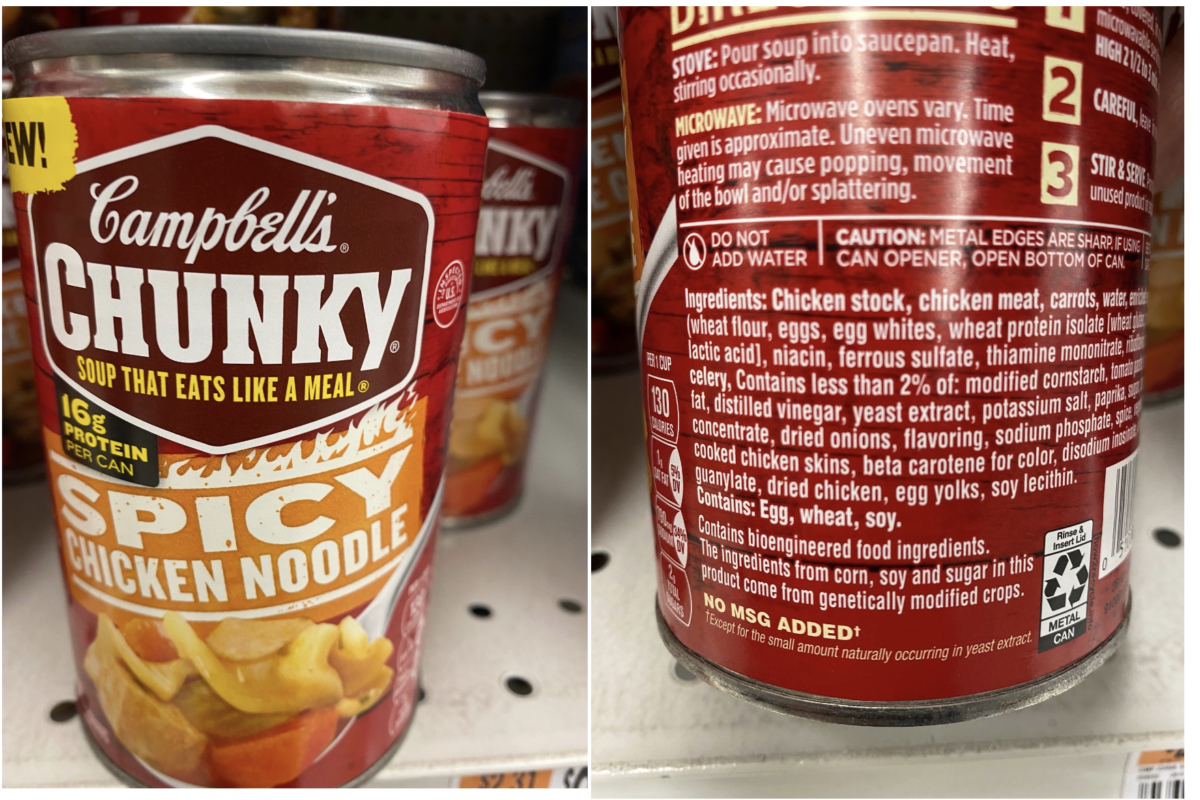After writing about the new US requirement to disclose bioengineered foods and ingredients, I spent some time at my local grocery stores checking out how different manufacturers are making their disclosures. Armed with my cell phone (for the digital disclosures), I visited my local Giant (owned by Ahold) and Wegmans stores. I inspected food packages likely to have bioengineered ingredients (primarily looking for foods that would contain corn, soybean, and canola ingredients, which are commonly made from genetically engineered crops). Here are my observations, some of which were not what I expected.
1. The most common disclosure method was text on the package
When Congress was debating a national requirement for identifying bioengineered foods, stakeholders fought vigorously over the electronic disclosure option, which requires a smartphone to access information from a QR code. Many stakeholders assumed that most food manufacturers would disclose electronically to make it hard for consumers to obtain the information and thus limit its value when making purchasing decisions. In fact, most bioengineered disclosures on the products I viewed were accomplished through text on the physical package. National food manufacturers that use text disclosures include General Mills, Kellogg, Post, Mondelez, Pepperidge Farm, and Campbell Soup. Both Giant and Wegmans also use on-package text for their store brand products.
2. Some major food companies use electronic digital disclosure
Some major food manufacturers, including PepsiCo, Coca-Cola, ConAgra, and Utz, have decided to use electronic disclosures for their products. Once I was able to scan a QR code (which can be challenging for foods in bags, such as corn chips), I was surprised to find the link that arrived on my cellphone clearly identified the food as bioengineered and often used the USDA bioengineered symbol.

3. Almost no products in the store use USDA ‘bioengineered’ symbol
The USDA developed a bioengineered symbol that food manufactures could use for their disclosure. Some stakeholders (including some consumer organizations and natural food companies) objected to it because they thought it was not neutral and could leave consumers with a positive perception of bioengineering. However, consumers are not, at least at present, likely to find food packages with the symbol in the grocery store. In my visit to two large grocery stores, I could only find one food, the Impossible Burger, with the symbol on the package. However, as mentioned, consumers will find the symbol is more widely used for many electronic disclosures.
4. No product voluntarily disclosed ‘derived from’ ingredients
Most bioengineered crops end up in our food supply as highly processed ingredients––corn is made into corn oil or high fructose corn syrup, canola becomes canola oil, and sugar beets become sugar. These ingredients are not required to be disclosed (they contain no plant DNA), but food manufacturers can voluntarily disclose them as “derived from” ingredients. I looked at many different products with those ingredients but not a single product contained a “derived from” disclosure (text, symbol, or QR code). What I did find were some products with “derived from” ingredients stating they “contain a bioengineered ingredient.” Two examples were Wegmans Tapioca Pudding (with sugar likely derived from bioengineered sugar beets) and Coca-Cola soda (with high fructose corn syrup likely derived from bioengineered corn). I can speculate that those companies either decided to simplify their messages to consumers (i.e., not distinguishing between bioengineered products and “derived from” products) or didn’t want to go through USDA’s elaborate process to document that the ingredients don’t contain any modified DNA.
5. No information on which ingredients are bioengineered
When a box of Kellogg’s Corn Flakes said it contains a bioengineered ingredient, I assumed it was referring to “milled corn.” The same was true for ConAgra’s frozen corn, which has just one ingredient. But why was there a disclosure for Giant’s Crunchy Peanut Butter Granola Bars or Ritz crackers? Both food packages said they contain a bioengineered ingredient, but which ingredient(s)? The USDA regulations do not require disclosure of ingredient information, but I found it frustrating that the bioengineered ingredients weren’t identified, and I assume some consumers will agree. The only company that provided any additional information was Campbell Soup, which noted on its soup cans that “the ingredients from corn, soy, and sugar in this product come from genetically modified crops.”

Overall, I was pleasantly surprised that many foods disclosed bioengineered content using the text option on the package and that they complied with the implementation date. It also was good to find that the electronic disclosures took me to a webpage that prominently displayed the bioengineered content information. Finally, I didn’t expect to find any “derived from” disclosures, but I was surprised that some of those foods instead included a “contains” disclosure. It will be interesting to see whether consumers find the new disclosures helpful in their purchasing decisions.
Images: Greg Jaffe
